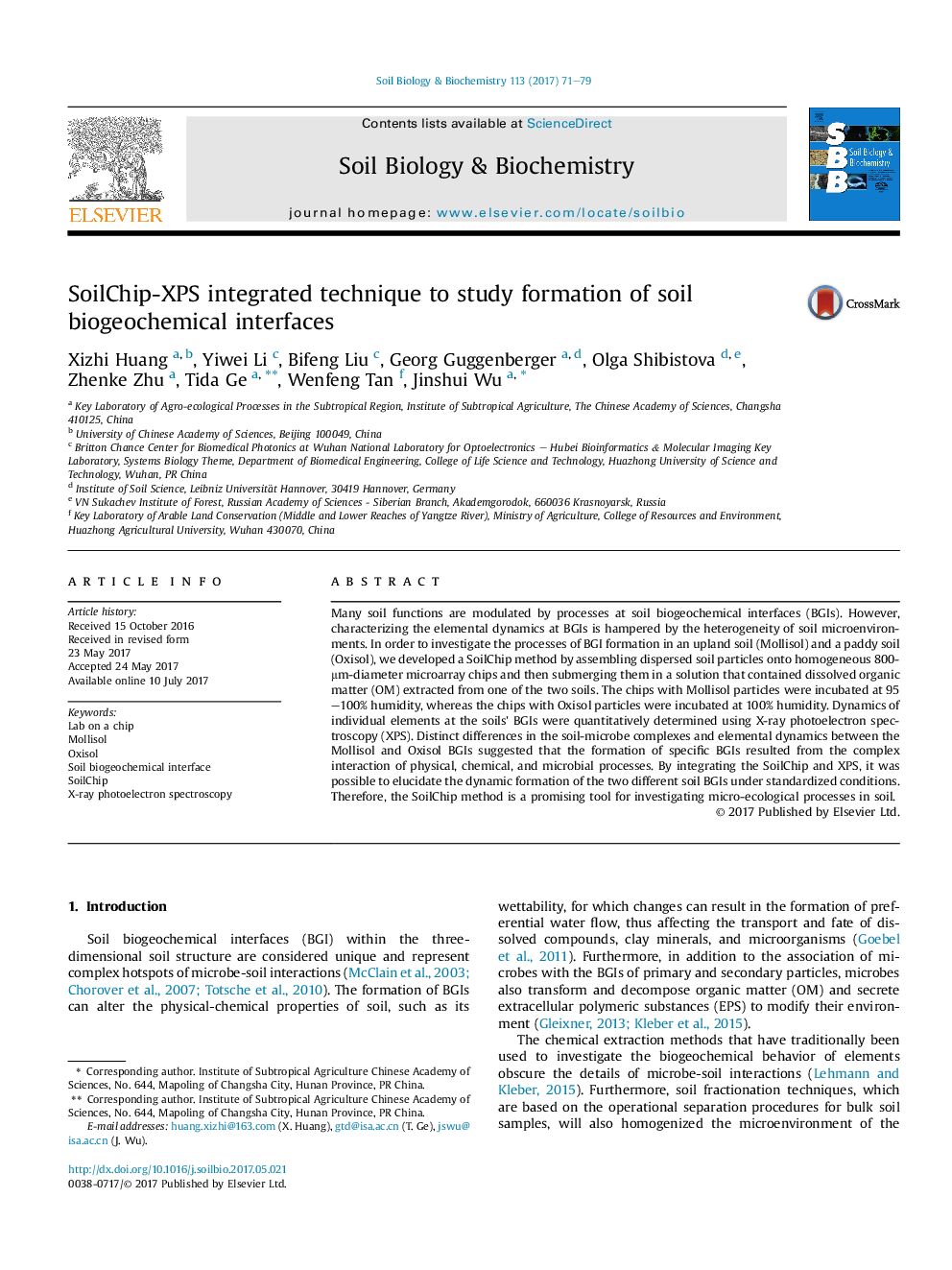| کد مقاله | کد نشریه | سال انتشار | مقاله انگلیسی | نسخه تمام متن |
|---|---|---|---|---|
| 5516368 | 1542571 | 2017 | 9 صفحه PDF | دانلود رایگان |

- A novel SoilChip method for soil biogeochemical interfaces (BGIs) was proposed.
- No destructive pretreatments were needed for surface characterizations in SoilChip.
- Dynamics of individual elements at the BGIs were firstly characterized.
- The microbial transformation processes at the BGIs acted as a decisive factor.
Many soil functions are modulated by processes at soil biogeochemical interfaces (BGIs). However, characterizing the elemental dynamics at BGIs is hampered by the heterogeneity of soil microenvironments. In order to investigate the processes of BGI formation in an upland soil (Mollisol) and a paddy soil (Oxisol), we developed a SoilChip method by assembling dispersed soil particles onto homogeneous 800-μm-diameter microarray chips and then submerging them in a solution that contained dissolved organic matter (OM) extracted from one of the two soils. The chips with Mollisol particles were incubated at 95-100% humidity, whereas the chips with Oxisol particles were incubated at 100% humidity. Dynamics of individual elements at the soils' BGIs were quantitatively determined using X-ray photoelectron spectroscopy (XPS). Distinct differences in the soil-microbe complexes and elemental dynamics between the Mollisol and Oxisol BGIs suggested that the formation of specific BGIs resulted from the complex interaction of physical, chemical, and microbial processes. By integrating the SoilChip and XPS, it was possible to elucidate the dynamic formation of the two different soil BGIs under standardized conditions. Therefore, the SoilChip method is a promising tool for investigating micro-ecological processes in soil.
644
Journal: Soil Biology and Biochemistry - Volume 113, October 2017, Pages 71-79